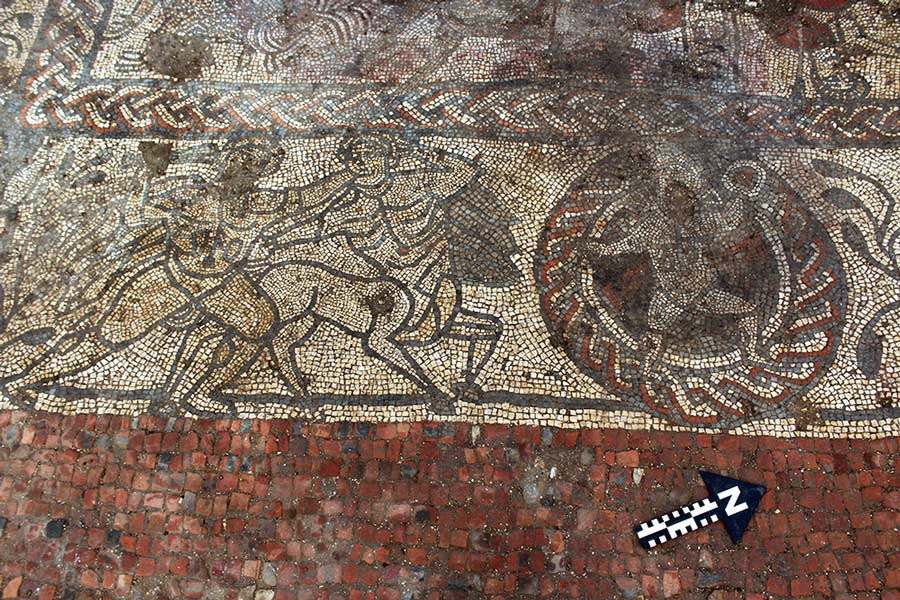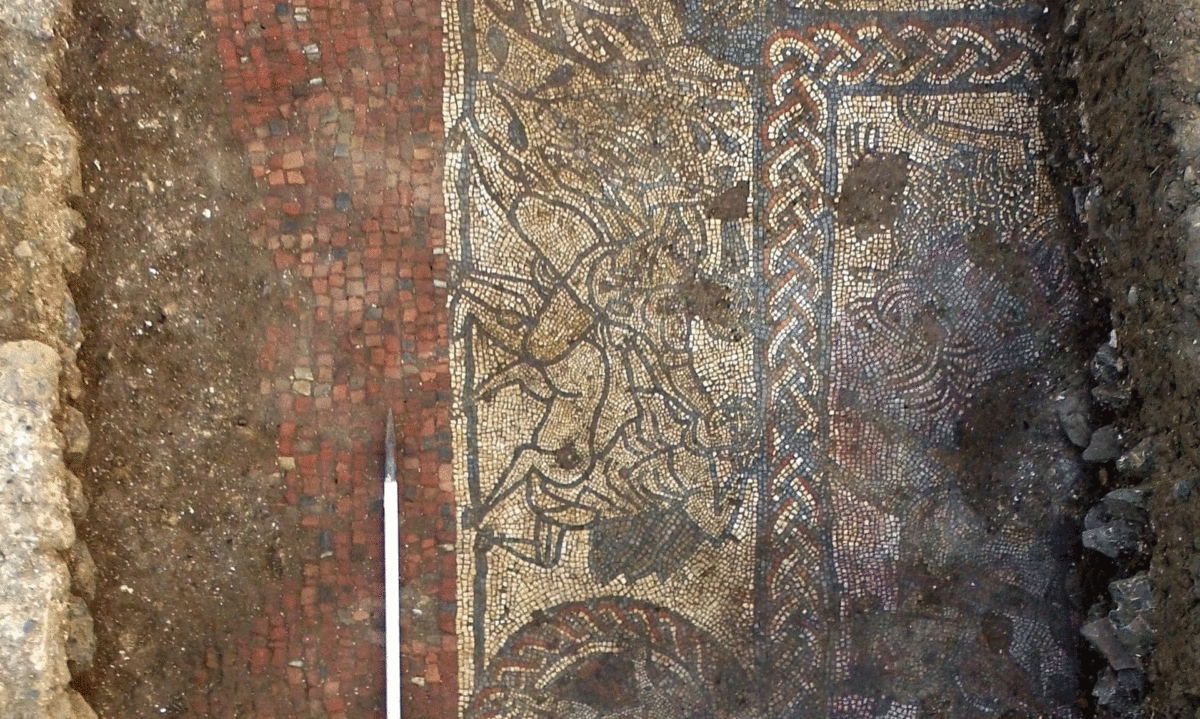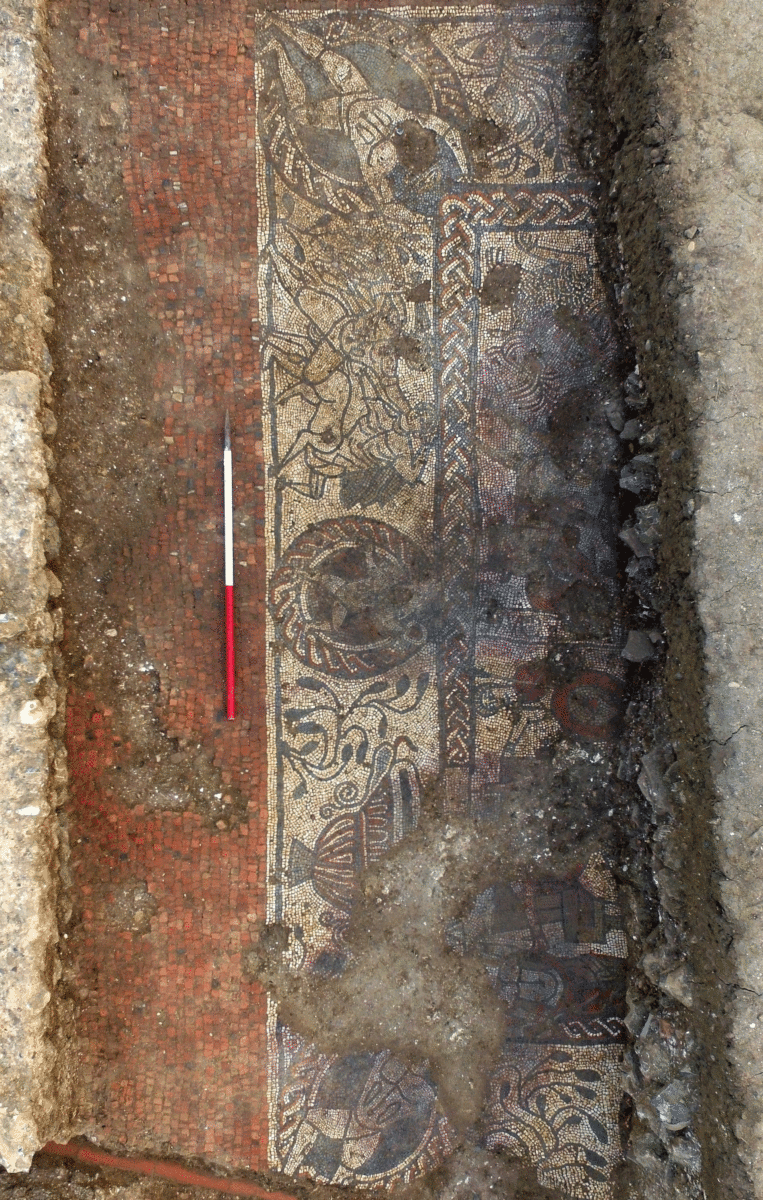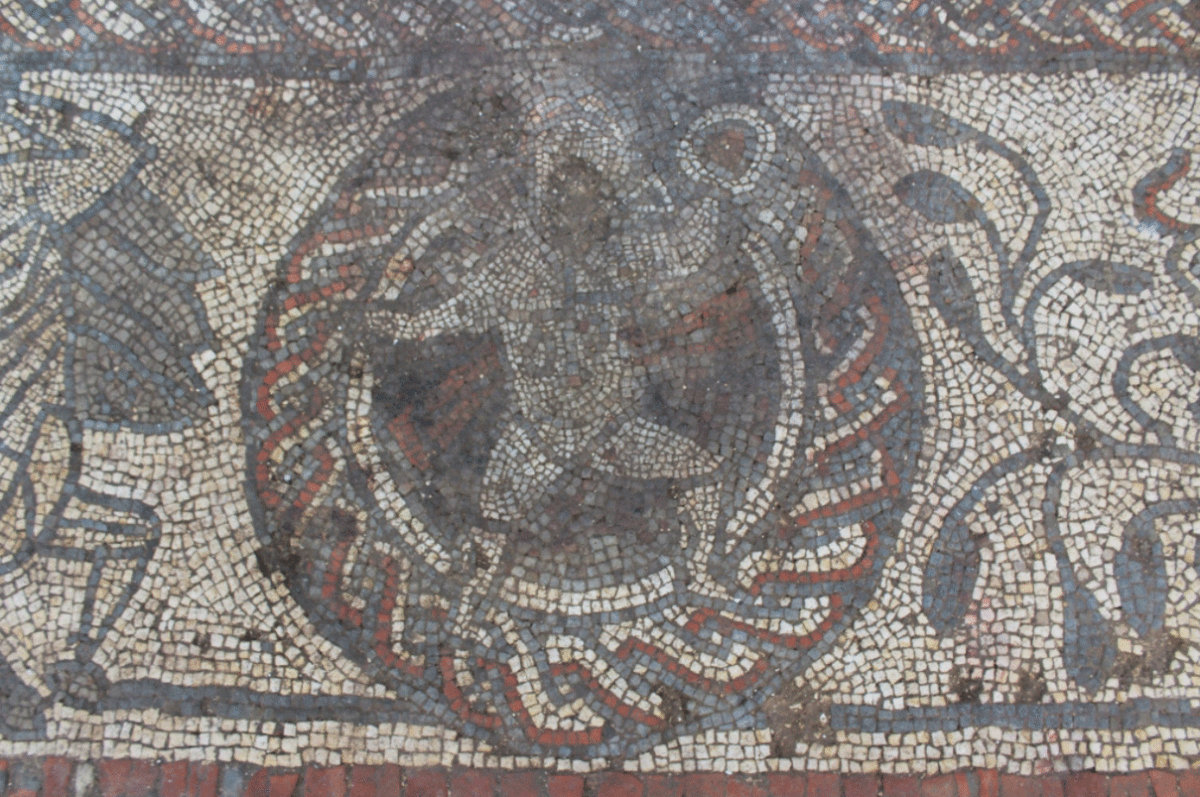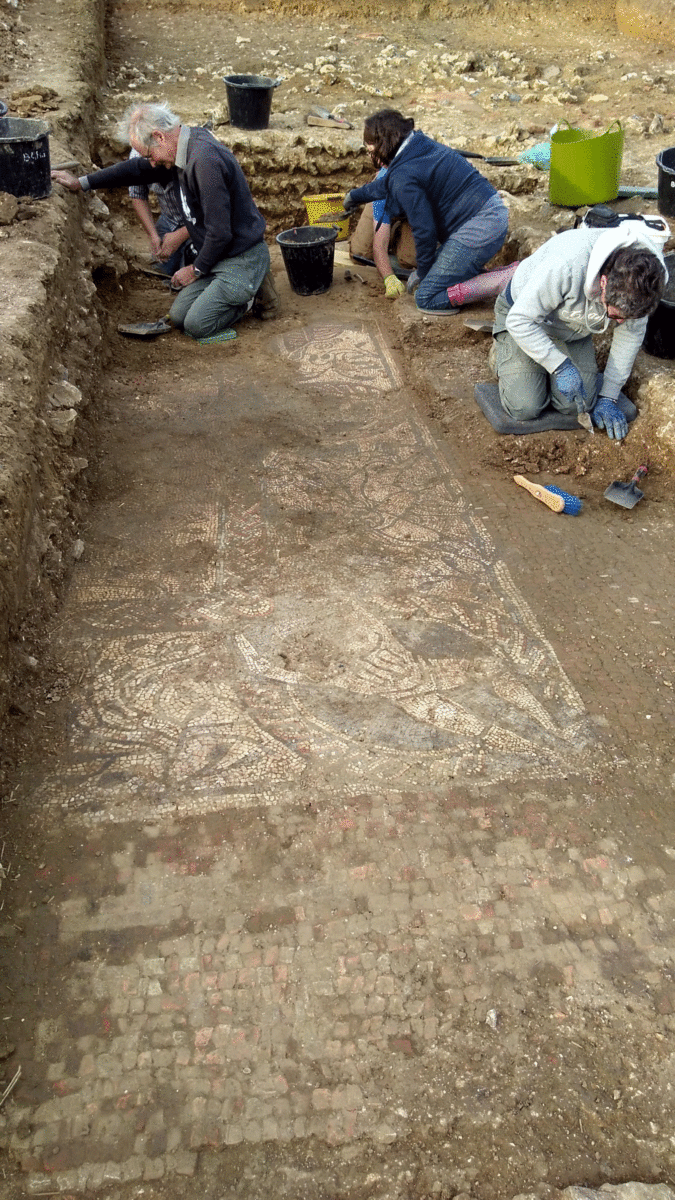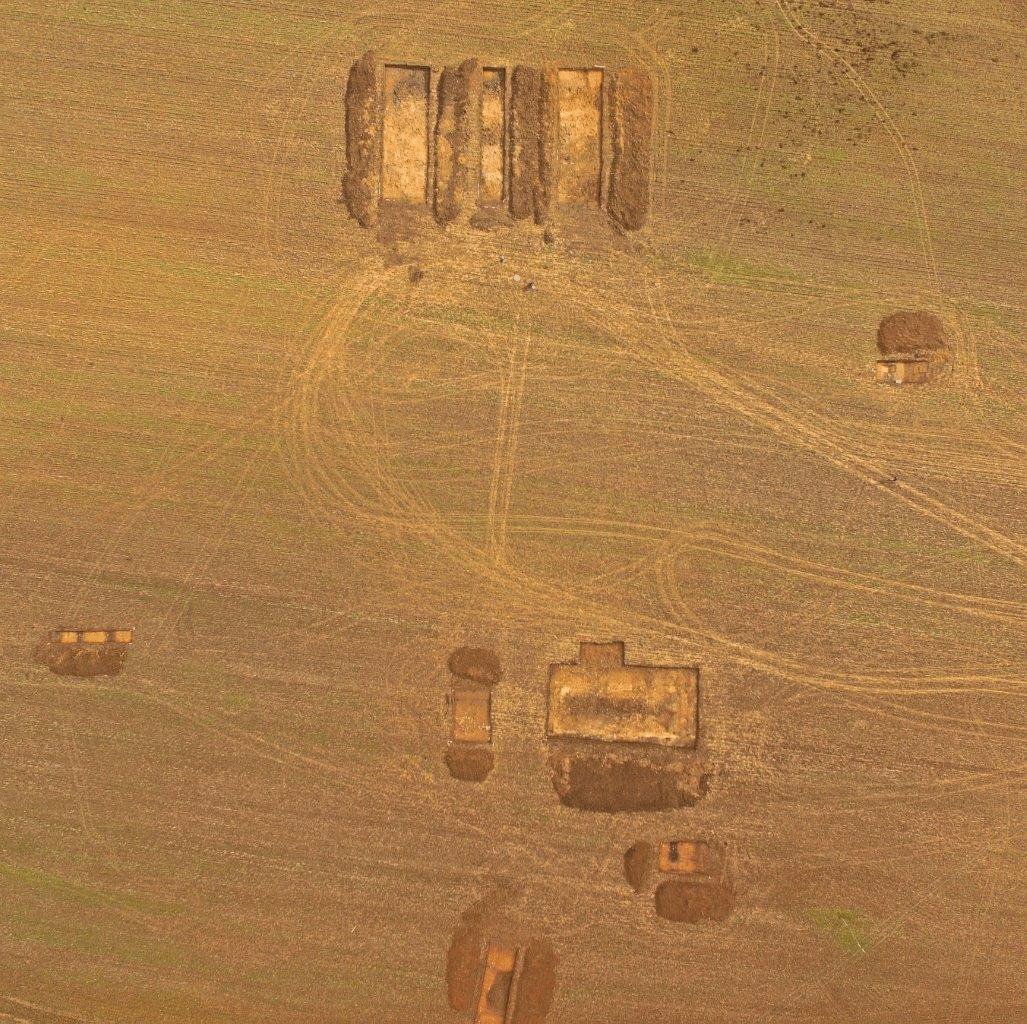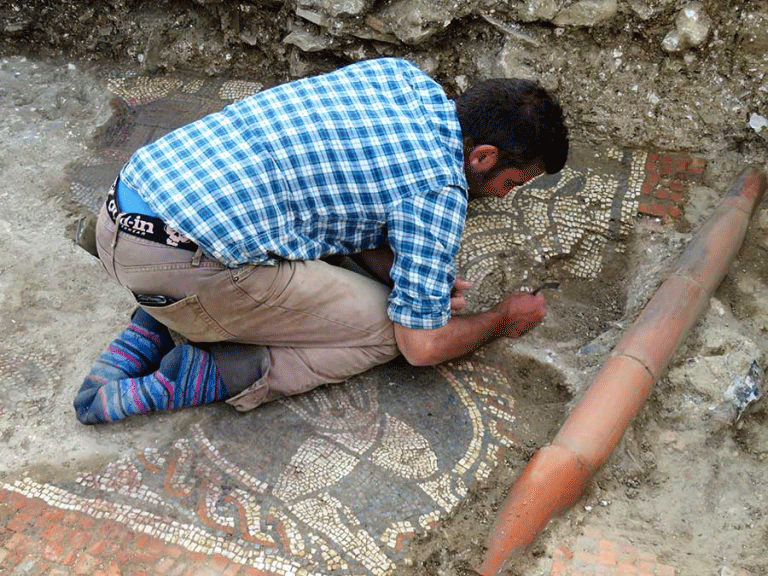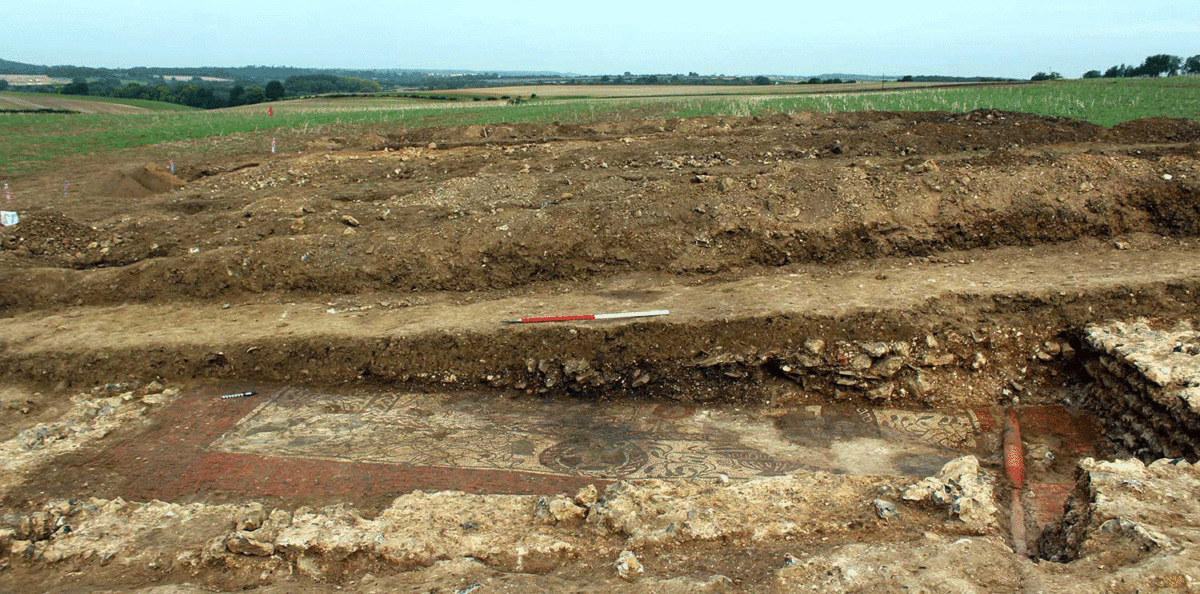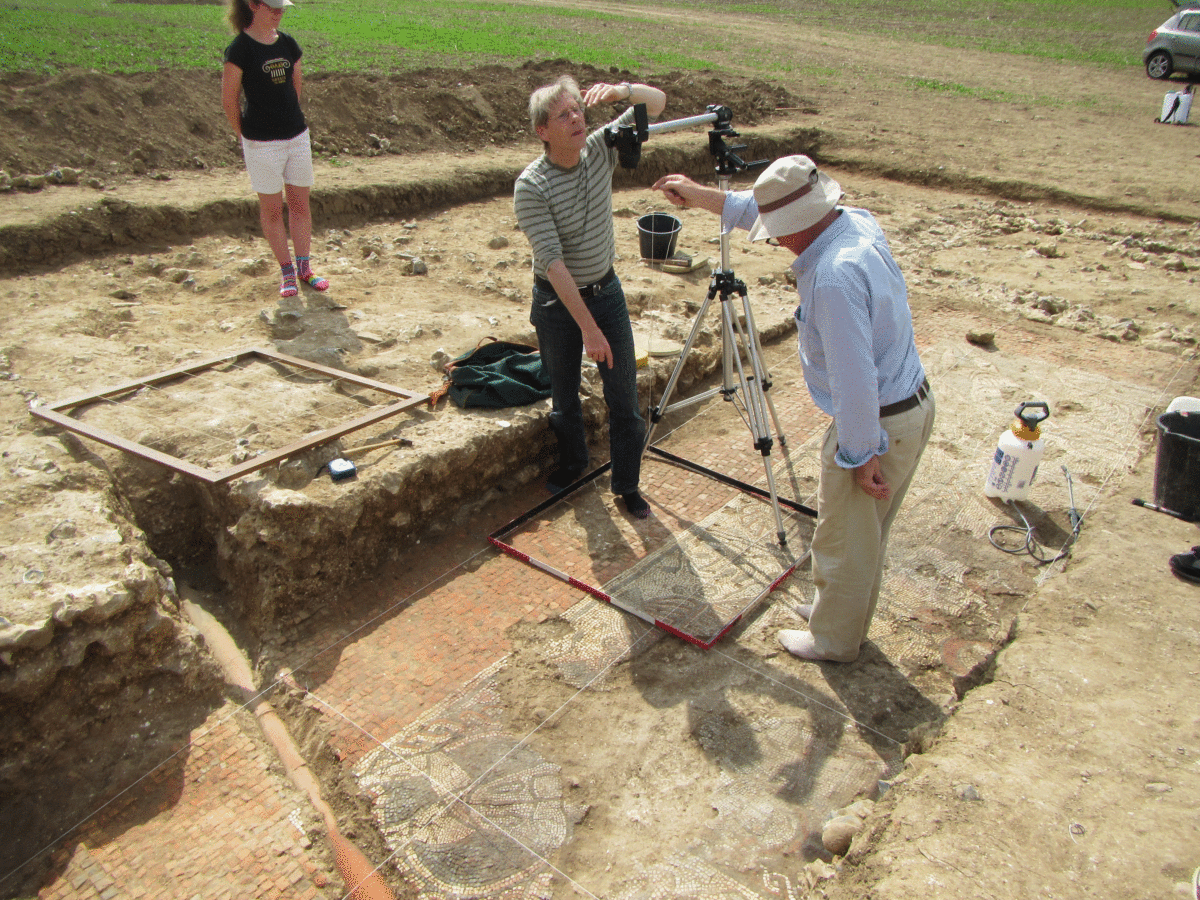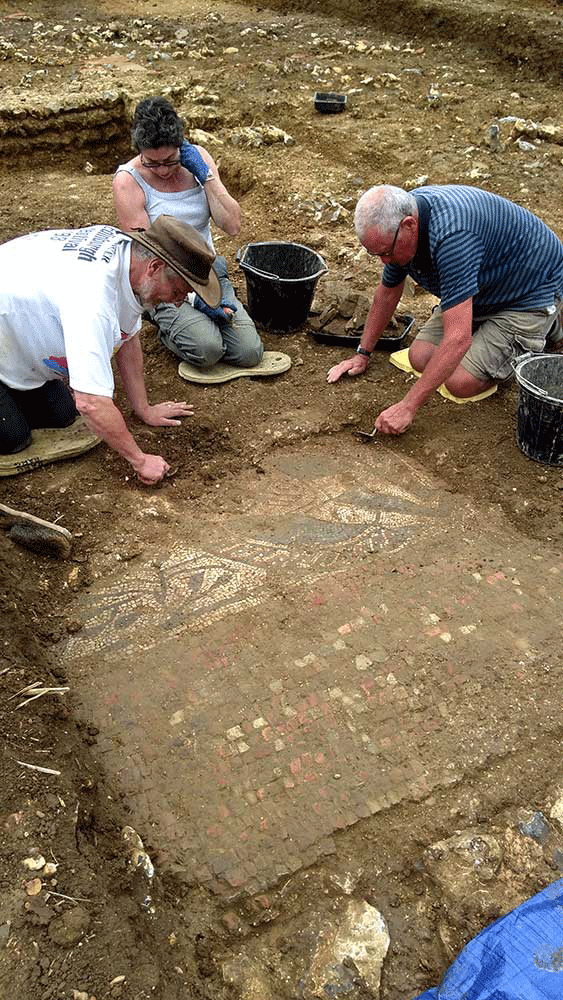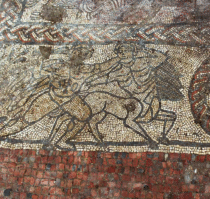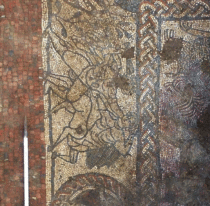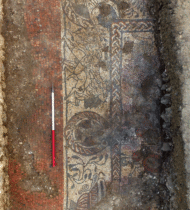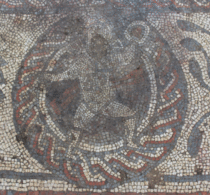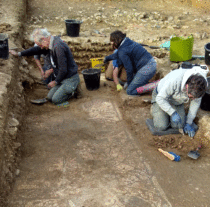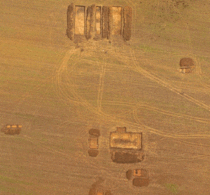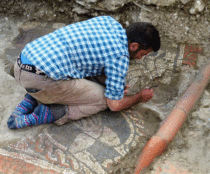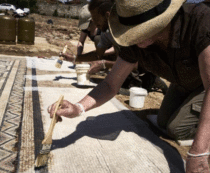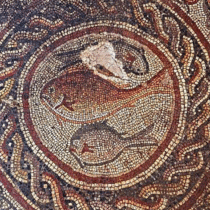An extraordinary Roman mosaic floor has been found in West Berkshire, in the UK, with mythological imagery that is rare in Britain. The discovery was made by archaeologists and volunteers who were working at a Roman villa in Boxford, only two weeks before the end of the excavation project.
The villa itself is rather ordinary, part of a complex with a farmhouse and a bath. It is medium-sized and bears no other special architectural or decorative feature than the mosaic. The mosaic dates to the late 4th century, at about 380AD, a turbulent time since the area was invaded by Saxons, Picts and Irish and Roman Emperor Magnus Maximus was gathering troops in Gaul. This means that rural areas which were more secure could invest in new art more than those in urban areas, thus the discovery of the mosaic in this particular spot can be partly interpreted.
Although the artwork is not of the highest quality, the depictions on the mosaic derive from mythological themes that are unique in Britain, which makes it one of the most important Roman mosaics found in the country. The mosaic has not been entirely uncovered, but from what has been revealed so far the central panel bears representations from the life of Bellerophon, another element bears an inscription, perhaps related to the imagery on the central panel, and the bottom border contains three other significant iconographic features.
Provisional identification of the central panel shows that it contains a scene where Bellerophone riding Pegasus attacks the chimera, and one where he is offered the hand of Philonoe by her father king Ioabates. If this is confirmed when the rest of the mosaic is excavated, it will be the first mosaic with this representation in Roman Britain.
The inscription has not been deciphered yet, but experts believe that it might be related to the scenes in the central panel.
On the bottom border, a Cupid is depicted in a medallion in the middle, and a telamon and an atlantid in medallions in the corners. The three figures all break out of the frame of their medallions, a quite unusual feature in Roman mosaics. Between the Cupid and the atlantid a man is drawn, wearing a thick cloak and holding a club facing a centaur. This could be a depiction of Hercules battling Nessus.
The mosaic has been reburied, along with other findings from this year’s excavations, so that they will be safe until their conservation can begin. The site has been excavated in summer seasons as part of the Boxford History Project since 2011, led by archaeologists from Cotswold Archaeology and with the participation of community volunteers. The last three seasons, during which tiles, pottery fragments and the walls of buildings have been revealed, have been funded by the Heritage Lottery Fund.
